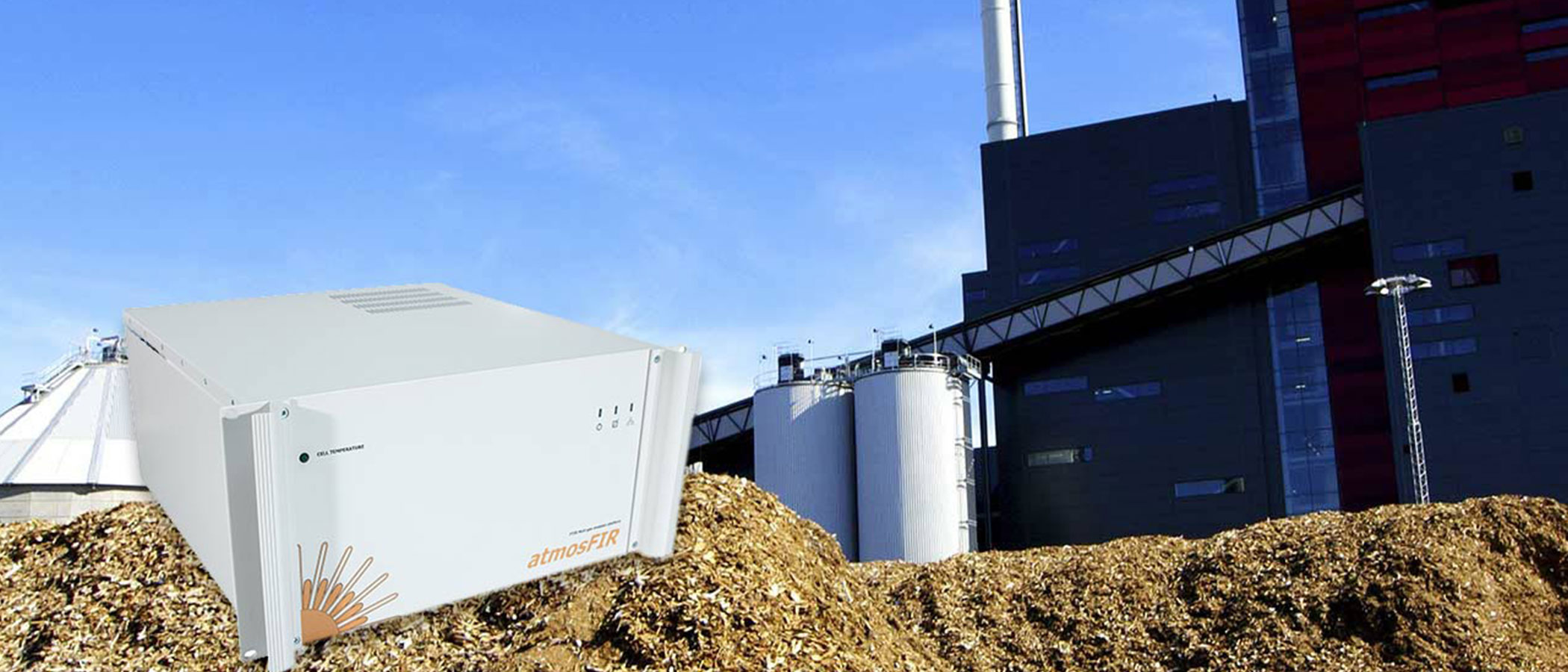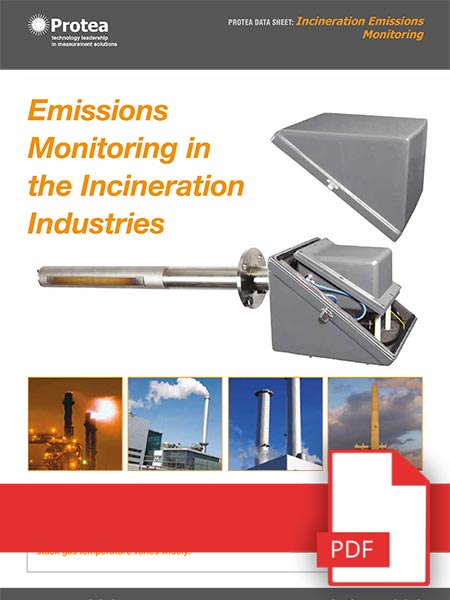Emissions Reduction & Control
Scrubber Control
Monitoring of emissions from incinerators is a demanding application for Continuous Emission Monitoring Systems. Their emissions are highly corrosive, some of the gases are soluble and, because the waste being burnt is constantly changing, the resulting stack gas temperature varies widely.
Scrubber Control
For control of Incinerator flue gas scrubbing systems, P2000 produces very stable HCl measurements in the presence of high levels of water vapour and its rapid response time makes it an ideal instrument for scrubber control. The analyser works well in the high dust applications of cement plants, and incineration applications. P2000 provides measurements for analysing gases associated with Oxides of Nitrogen removal by Ammonia injection. This de-NOx process, if carried out alongside scrubber measurements using a second analyser, can exploit the multianalyser control capability of the Protea S-PC controller.
CO2 Capture by Amine Absorption
The act of capturing and storing CO2 produced from large scale combustion plants such as power stations is becoming more and more favourable and feasible. One of the most common post-combustion CO2 capture methods is by absorption. The absorption plant can be added on to the existing combustion process, with the flue gas first passing through an absorption column where the CO2 reacts with an absorber.
Amines of different types are used as the absorber. An amine CO2 capture plant can capture as much as 90% of the CO2 emitted from the power station and so has a real benefit for the environment. Having said this, care needs to be taken to ensure that amine emissions themselves are monitored, managed and prove no extra damage to the environment. Research is on-going to develop new amines or mixtures of amines to reduce emissions. The most common absorber in use in today’s first generation of industrial pilot plants is Monoethanolamine (MEA).
Once the CO2 has reacted with the aqueous amine solution, it forms a carbonate salt. The salt is then heated in a stripping column, reforming pure CO2 and pure amine. The amine can be recycled whereas the CO2 is compressed and transported away as a liquid.
During the CO2 capture process, a small amount of amine will escape from the absorber along with the cleaned flue gas. This can be as liquid droplets or as gas. With possible mixes of amines being used as well as degradation products of amines there is a need to have amine monitoring technology that can measure as many species as possible and as accurately as possible.
Protea’s FTIR gas analysers have proven capable of measurement of amines from CO2 capture facilities, enabling the pilot plant operates to understand better the emissions to atmosphere of species such as MEA. (e.g. Longannet Carbon Capture Pilot Plant, 2009).
FTIR amine analysis can be carried out in the presence of the background flue gas of NO, NO2, NOx, CO, H2O, SO2. And of course CO2 levels can be measured as well to back up mathematical modelling predictions of CO2 reduction.
| N-Nitrosamines |
|---|
| N-Nitrosodimethylamin (NDMA) 62-75-9 |
| N- Nitrosodiethylamin (NDEA) 55-18-5 |
| Nitrosomorpholine (NMOR) 59-89-2 |
| Nitrosopiperidien (NPIP) 100-75-4 |
| N-Nirodiethanolamin (NDELA) 1116-54-7 |
| N-Nitrospierazine 5632-47-3 |
| 1,4-Di-Nitrospierazine 140-79-4 |
| Alkylamines |
|---|
| Methylamine 74-89-5 |
| Ethylamine 75-04-7 |
| Dimethylamine 124-40-3 |
| Diethlamine 109-89-7 |
| Amines |
|---|
| Mono-ethanol-amine (MEA) 141-43-5 |
| Di-ethanol-amine (DEA) 111-42-27 |
| Piperazine 110-85-0 |
| 1,2-Di-amino-ethane (EDA) 107-15-3 |
| 2-Amino-2-methyl-1-propanol (AMP) 124-68-5 |
| N-Methyl-di-ethanol-amine (MDEA) 105-59-9 |
| Amides |
|---|
| Formamide 75-12-7 |
| Acetamide 60-35-5 |
| Aldehydes |
|---|
| Formaldehyde 50-00-0 75-12-7 |
| Acetaldehyde 75-07-0 |
Protea’s FTIR gas analysers are compliant with the Environment Agencies MCERTS scheme for emission monitoring equipment. With Protea’s in-house expertise in analytical model development, this ensures that our amine emissions monitors are the most accurate solution for this emerging technology.
TO Multi-Stream By-pass System
A large pharmaceutical plant runs a Thermal Oxidiser on plant to incinerate their solvent-containing gas streams before emission. When the oxidiser is offline, then the plant must monitor the release of solvent to the atmosphere.
A ProtIR 204C fixed monitoring system was installed that continually measures 24 plant solvents, including Acetone, Cyclohexane, DCM, DMF, IPA, MIBK, Toluene and THF. Given the high levels that are possible, the system has an active dilution system, reducing the concentration of the measured gas in the analyser to levels that can be analysed simply. Chemometric modelling enables interferences from the overlapping absorption spectra to be accounted for, ensuring accurate analysis of all 24 gases.
Measurements from the system are fed into a live dispersion model on plant, enabling estimates of ground level concentrations at points around the site to be displayed in real-time.
Multi-Stream Biomass Combustion Research
Protea supplied a complete turn-key measuring system for multi-point sampling in a University combustion research laboratory. Utilising the latest in FTIR spectroscopy, atmosFIR, a complete cabinet system was supplied containing:
- atmosFIR FTIR Gas analyser
- Sampling System Control Module (SSCM)
- Heated Stream Selection Module (HSSM)
- Temperature Control Module (TCM)
- 4 heated sample lines
- 4 heated sample probes
- Embedded PC controller
The atmosFIR FTIR analyser is a full spectrum gas analyser allowing for the measurement of hundreds of gases with one instrument. For this application it was configured for inorganic combustion gas components such as CO, NO, NO2, N2O, SO2, HCl, NH3, H2O and CO2, as well as a number of organic species such as CH4, C2,H6, C2H4 and HCHO (formaldehyde).
Contained in the one compact cabinet system alongside the gas analyser was Protea Heated Stream Selection Module (HSSM) - a multi-point sampling manifold of 4 stream selection valves all heated to 180°C. The HSSM is controlled via the FTIR control software, PAS-Pro, enabling complete automation of the sampling from all 4 streams. Each measurement point is measured for a pre-programmed time frame within the software. Alternatively, manual control allows for switching of the streams when required by the operator.
The system used completely heated sampling systems of 180°C between probe and analyser, using Protea's heated sample lines. The heated lines were all controlled via the Temperature Control Module (TCM), a bank of 4 temperature control circuits for external heated line control. All heated part temperatures were monitored with alarms being register in the Sampling System Control Module (SSCM). This enables the sampling to be suspended from any measurement point should the sampling equipment for that stream suffer a temperature failure.
All data is logged according to the sampling point, allowing for simple data extraction and manipulation by the operators.

